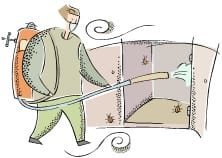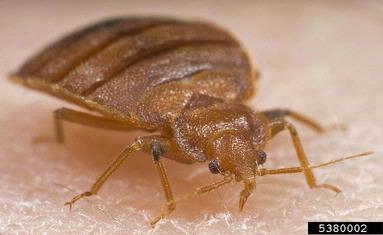Dan Suiter, UGA Entomology and Derrick Lastinger, Georgia Department of Agriculture
I n January 2013 the U.S.-E.P.A. mandated some sweeping changes in the way pyrethroid-based insecticides will be used in the home environment. These changes will impact use labels for professional pest control operators and products available to homeowners in the over-the-counter market.
n January 2013 the U.S.-E.P.A. mandated some sweeping changes in the way pyrethroid-based insecticides will be used in the home environment. These changes will impact use labels for professional pest control operators and products available to homeowners in the over-the-counter market.
Pyrethroid insecticides can be recognized because the names of most of the active ingredients end in “-thrin”. Examples of commonly used pyrethroids are bifenthrin, cypermethrin, lambda-cyhalothrin, cyfluthrin, permethrin, esfenvalerate, etc. Pyrethroid products (sprays, aerosols, and granulars) are common in the professional market, and they dominate products in the over the counter (OTC) market.
Reasoning for these changes comes from emerging data demonstrating that pyrethroid insecticides applied to hard surfaces (concrete walkways and the like) end up in water, where they can easily be washed into stormwater and streams and be toxic to fish and aquatic invertebrates. Changes to labels and labeling are underway, and will continue in the near future.
A Guidance Document, prepared by the Georgia Department of Agriculture’s Structural Pest Control Section, on the interpretation of these changes can be found here. Should you have questions, please don’t hesitate to contact the Structural Pest Section at (404) 656 – 3641, and as always defer to the label.


